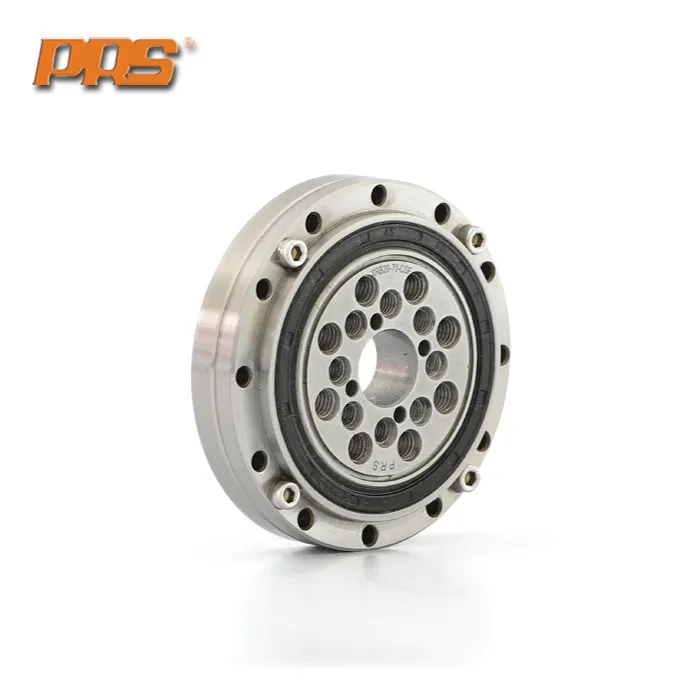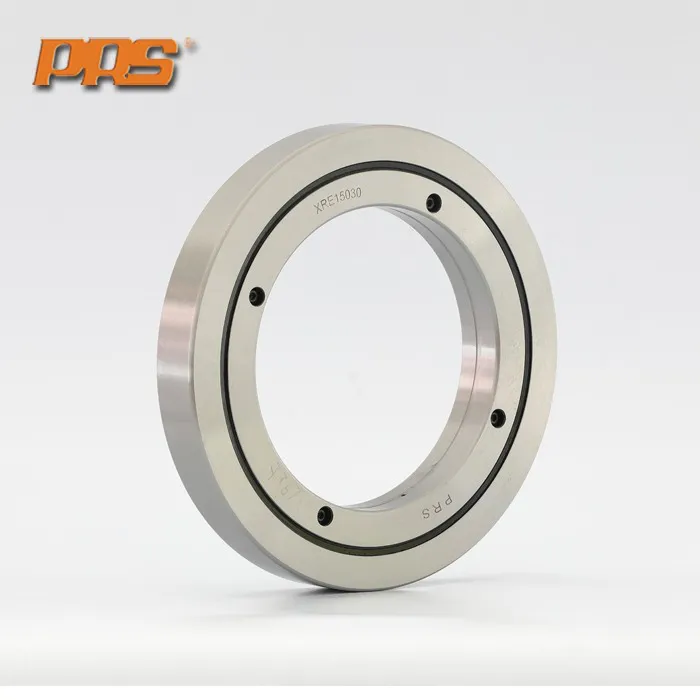2025-08-25 01:18:18PRS Bearings
Choosing the right grease for a crossed roller bearing is essential for its performance, longevity, and reliability. The wrong grease can lead to premature failure, excessive friction, and heat generation. The selection process depends on several critical factors related to the bearing's operating conditions.

Operating Temperature: This is one of the most important factors. The grease must be able to perform effectively within the temperature range of the application.
Base Oil Viscosity: The viscosity of the base oil (the lubricant component) changes with temperature. It's crucial that the base oil maintains sufficient viscosity at the operating temperature to form a protective lubricating film.
Dropping Point: The dropping point is the temperature at which the grease changes from a semi-solid to a liquid. The operating temperature should be well below the grease's dropping point (typically by 10-20°C for mineral greases and 20-30°C for synthetic greases).
Types of Grease: Different thickeners and base oils are suited for different temperature ranges. For example, synthetic greases are often used for extreme high or low temperatures.
Loads: The load on the bearing determines the required film strength of the grease.
High Loads: Applications with heavy or shock loads require grease with a higher base oil viscosity and, often, with Extreme Pressure (EP) additives. These additives create a protective layer to prevent metal-to-metal contact under high pressure.
Low Loads: For lighter loads, a lower viscosity grease is generally sufficient.
Speed (Rotational Speed): The rotational speed of the bearing is a key factor in selecting both the base oil viscosity and the grease consistency (NLGI grade).
High Speeds: High speeds generate more friction and heat. A lower viscosity base oil and a softer consistency grease (lower NLGI number, e.g., NLGI 1 or 2) are typically used to minimize friction and allow for better heat dissipation.
Low Speeds: Very low-speed applications with heavy loads may benefit from a higher viscosity base oil and a stiffer grease (higher NLGI number) to ensure the lubricating film is maintained.
Environment: The operating environment can introduce contaminants or moisture that affect the grease's performance.
Dust and Contaminants: Grease acts as a sealant to prevent contaminants from entering the bearing. A stiffer grease (higher NLGI grade) is often better for this purpose.
Moisture and Water: Applications exposed to water require grease with good water resistance and rust-inhibiting additives. Lithium-based greases are often a good choice.

Manufacturer's Recommendations: Always consult the bearing or machine manufacturer's recommendations first. They will often specify a suitable grease and lubrication schedule based on their testing and application knowledge.
Consistency (NLGI Grade): For most crossed roller bearing applications, a general-purpose grease with an NLGI grade of 1 or 2 is used. However, a softer or stiffer grease may be needed for specific applications.
Compatibility: Do not mix different types of greases unless you have confirmed their compatibility. Mixing incompatible greases can lead to a breakdown of the thickener, resulting in a loss of lubrication and bearing failure.
Additives: Consider additives for specific conditions. EP additives are crucial for heavy loads, while rust and corrosion inhibitors are vital in humid or wet environments.
Synthetic vs. Mineral Grease: Synthetic greases generally offer a wider operating temperature range and better performance in extreme conditions but are more expensive. Mineral-based greases are suitable for a wide range of standard applications and are more cost-effective.
Choosing the right grease for a crossed roller bearing is critical for ensuring its long life, precision, and performance. Unlike standard ball bearings, cross roller bearings handle high radial, axial, and moment loads simultaneously, often in oscillating or slow-rotating applications. This unique combination of factors requires careful grease selection.